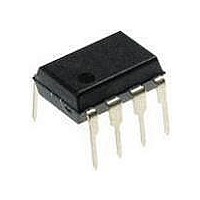PIC12F1840-I/P Microchip Technology, PIC12F1840-I/P Datasheet - Page 274

PIC12F1840-I/P
Manufacturer Part Number
PIC12F1840-I/P
Description
7 KB Flash, 256 Bytes RAM, 32 MHz Int. Osc, 6 I/0, Enhanced Mid Range Core 8 PDI
Manufacturer
Microchip Technology
Datasheet
1.PIC12F1840-IP.pdf
(382 pages)
Specifications of PIC12F1840-I/P
Processor Series
PIC12F
Core
PIC
Program Memory Type
Flash
Program Memory Size
7 KB
Data Ram Size
256 B
Interface Type
MI2C, SPI, EUSART
Number Of Timers
3
Operating Supply Voltage
1.8 V to 5.5 V
Maximum Operating Temperature
+ 85 C
Mounting Style
Through Hole
Package / Case
PDIP-8
Development Tools By Supplier
MPLAB IDE Software
Minimum Operating Temperature
- 40 C
Lead Free Status / Rohs Status
Lead free / RoHS Compliant
Available stocks
Company
Part Number
Manufacturer
Quantity
Price
Company:
Part Number:
PIC12F1840-I/P
Manufacturer:
MICROCHIP
Quantity:
200
- Current page: 274 of 382
- Download datasheet (4Mb)
PIC12(L)F1840
26.1.2.8
1.
2.
3.
4.
5.
6.
7.
8.
9.
10. If an overrun occurred, clear the OERR flag by
FIGURE 26-5:
DS41441B-page 274
Initialize the SPBRGH, SPBRGL register pair
and the BRGH and BRG16 bits to achieve the
desired baud rate (see
Baud Rate Generator
Clear the ANSEL bit for the RX pin (if applicable).
Enable the serial port by setting the SPEN bit.
The SYNC bit must be clear for asynchronous
operation.
If interrupts are desired, set the RCIE bit of the
PIE1 register and the GIE and PEIE bits of the
INTCON register.
If 9-bit reception is desired, set the RX9 bit.
Enable reception by setting the CREN bit.
The RCIF interrupt flag bit will be set when a
character is transferred from the RSR to the
receive buffer. An interrupt will be generated if
the RCIE interrupt enable bit was also set.
Read the RCSTA register to get the error flags
and, if 9-bit data reception is enabled, the ninth
data bit.
Get the received 8 Least Significant data bits
from the receive buffer by reading the RCREG
register.
clearing the CREN receiver enable bit.
Note:
RX/DT pin
Rcv Shift
Reg
Rcv Buffer Reg.
Read Rcv
Buffer Reg.
RCREG
RCIF
(Interrupt Flag)
OERR bit
CREN
RCIDL
Asynchronous Reception Set-up:
This timing diagram shows three words appearing on the RX input. The RCREG (receive buffer) is read after the third word,
causing the OERR (overrun) bit to be set.
Start
ASYNCHRONOUS RECEPTION
bit
bit 0
Section 26.3 “EUSART
(BRG)”).
bit 1
bit 7/8
Preliminary
Stop
bit
Word 1
RCREG
Start
bit
bit 0
26.1.2.9
This mode would typically be used in RS-485 systems.
To set up an Asynchronous Reception with Address
Detect Enable:
1.
2.
3.
4.
5.
6.
7.
8.
9.
10. Get the received 8 Least Significant data bits
11. If an overrun occurred, clear the OERR flag by
12. If the device has been addressed, clear the
Initialize the SPBRGH, SPBRGL register pair
and the BRGH and BRG16 bits to achieve the
desired baud rate (see
Baud Rate Generator
Clear the ANSEL bit for the RX pin (if applicable).
Enable the serial port by setting the SPEN bit.
The SYNC bit must be clear for asynchronous
operation.
If interrupts are desired, set the RCIE bit of the
PIE1 register and the GIE and PEIE bits of the
INTCON register.
Enable 9-bit reception by setting the RX9 bit.
Enable address detection by setting the ADDEN
bit.
Enable reception by setting the CREN bit.
The RCIF interrupt flag bit will be set when a
character with the ninth bit set is transferred
from the RSR to the receive buffer. An interrupt
will be generated if the RCIE interrupt enable bit
was also set.
Read the RCSTA register to get the error flags.
The ninth data bit will always be set.
from the receive buffer by reading the RCREG
register. Software determines if this is the
device’s address.
clearing the CREN receiver enable bit.
ADDEN bit to allow all received data into the
receive buffer and generate interrupts.
bit 7/8 Stop
Word 2
RCREG
9-bit Address Detection Mode Set-up
bit
Start
2011 Microchip Technology Inc.
bit
Section 26.3 “EUSART
(BRG)”).
bit 7/8
Stop
bit
Related parts for PIC12F1840-I/P
Image
Part Number
Description
Manufacturer
Datasheet
Request
R

Part Number:
Description:
7 KB Flash, 256 Bytes RAM, 32 MHz Int. Osc, 6 I/0, Enhanced Mid Range Core, Nano
Manufacturer:
Microchip Technology
Datasheet:

Part Number:
Description:
MCU, MPU & DSP Development Tools 8 Bit PIC Develop Microcontroller
Manufacturer:
SchmartBoard
Datasheet:

Part Number:
Description:
7 KB Flash, 256 Bytes RAM, 32 MHz Int. Osc, 6 I/0, Enhanced Mid Range Core 8 DFN
Manufacturer:
Microchip Technology

Part Number:
Description:
7 KB Flash, 256 Bytes RAM, 32 MHz Int. Osc, 6 I/0, Enhanced Mid Range Core 8 SOI
Manufacturer:
Microchip Technology

Part Number:
Description:
7 KB Flash, 256 Bytes RAM, 32 MHz Int. Osc, 6 I/0, Enhanced Mid Range Core, Nano
Manufacturer:
Microchip Technology
Datasheet:

Part Number:
Description:
7 KB Flash, 256 Bytes RAM, 32 MHz Int. Osc, 6 I/0, Enhanced Mid Range Core, Nano
Manufacturer:
Microchip Technology
Datasheet:

Part Number:
Description:
7 KB Flash, 256 Bytes RAM, 32 MHz Int. Osc, 6 I/0, Enhanced Mid Range Core, Nano
Manufacturer:
Microchip Technology
Datasheet:

Part Number:
Description:
7 KB Flash, 256 Bytes RAM, 32 MHz Int. Osc, 6 I/0, Enhanced Mid Range Core, Nano
Manufacturer:
Microchip Technology

Part Number:
Description:
7 KB Flash, 256 Bytes RAM, 32 MHz Int. Osc, 6 I/0, Enhanced Mid Range Core, Nano
Manufacturer:
Microchip Technology

Part Number:
Description:
7 KB Flash, 256 Bytes RAM, 32 MHz Int. Osc, 6 I/0, Enhanced Mid Range Core, Nano
Manufacturer:
Microchip Technology
Datasheet:

Part Number:
Description:
7 KB Flash, 256 Bytes RAM, 32 MHz Int. Osc, 6 I/0, Enhanced Mid Range Core, Nano
Manufacturer:
Microchip Technology
Datasheet:

Part Number:
Description:
Manufacturer:
Microchip Technology Inc.
Datasheet:

Part Number:
Description:
Manufacturer:
Microchip Technology Inc.
Datasheet:











